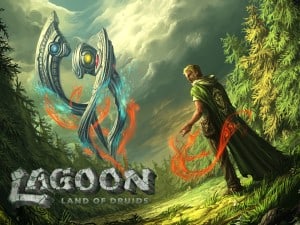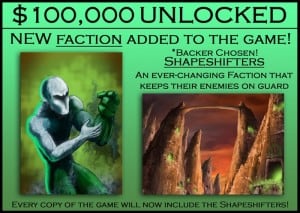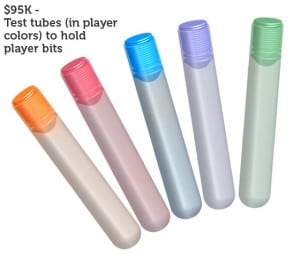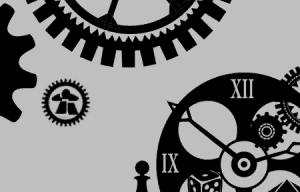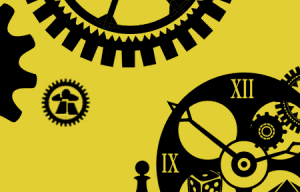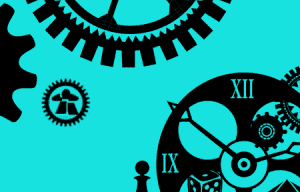
It’s a fact: Kickstarter has become a huge factor in the tabletop game industry. In a lot of ways that’s good… it means many more games are being made by people who never would have had a shot. But it has also changed the way games are designed, for better or worse.
Today I’m going to discuss how Kickstarter affects the game making process, and how a designer might adapt a game to better suit the new fundraising paradigm. I’m hoping it will help those who plan to self-publish through Kickstarter, design a game to pitch to Kickstarter publishers, or even Kickstarter backers who want a bit more insight into how creators think about their projects.
Before getting any farther, I just want to say that following this advice will not necessarily make your game better. In fact, I think many of these suggestions have a real chance to make your game less focused and more difficult to learn and play. But I do think they have a good chance of making the Kickstarter experience better.
KICKSTARTER SUCCESS
Before getting into the suggestions, I want to explain what I mean by success in Kickstarter. For most people, success for a Kickstarter means one thing: more funds raised. While I think that’s really important, making sure things go smoothly after the campaign finishes is ultimately more important. This means you need to be careful not to spend more money than you raise and not waste a lot of time dealing with avoidable problems.
My advice today will deal with how the game design can help with both of these aspects of Kickstarter success. Note that there are a lot of other factors that impact the success of a Kickstarter campaign, most notably marketing and having a good production plan, but my focus here will be on how you as a game designer can help contribute to a successful Kickstarter.
ALL ABOUT APPEARANCES
Most Kickstarter backers will choose whether to support your game or not with little understanding of the game’s actual gameplay. Honestly, this isn’t new–historically, most players have bought games still in shrink wrap. But for Kickstarters, you have a page full of images and video to sell your game, so it’s more important than ever to have a solid sales pitch, which starts with theme and art.
The art and theme for Lagoon: Land of the Druids really spoke to backers, helping to propel the Kickstarter to blockbuster levels.
That may sound like someone else’s problem, but there’s a lot you can do as a designer to ensure that you have compelling images to draw people in. First, avoid abstract games. Second, do something original. Even if you use a tried-and-true theme, add your own spin. And make sure the theme is coherent and succinct. You can add subtlety in the actual game, but at least be able to explain the game in a quick soundbite.
Strong characters also help a lot here. Sure, some games do just fine without striking personalities (city builders come to mind), but having characters that backers can empathize with goes a long way in making your game accessible.
STRETCH GOALS
As I discussed in my article on the Kickstarter emotional roller coaster, goals are some of the biggest motivators that Kickstarter offers to increase funding, something you don’t want to give up after you’ve hit your funding goal. Stretch goals were devised to do just this.
Below I’ll cover some common stretch goals and how you can design a game to take advantage of them.
COMPONENT UPGRADES
The simplest type of stretch goal involves improving the materials used for the game. This can mean going from a tuck-box to a two-piece box, thicker tokens, generic wooden pieces turning into custom plastic models, or many other possibilities. Almost all games can benefit from this type of stretch goal, but they tend to not be terribly exciting or motivating.
One special case is really spicing up a single component. The first player marker is a great candidate, though there are countless other possibilities. It shouldn’t be difficult to identify a good candidate game piece, assuming your game features one, so always be on the lookout for a something special you can upgrade.
NEW CONTENT
What tends to be much more exciting for backers is the possibility of getting new content for their games. (Note that this is really where Kickstarter starts to warp games. More content does not always mean better gameplay, and in fact often means a more bloated game.)
There are three kinds of extra content worth thinking about. The first is new additions to existing game systems (think black cards from 7 Wonders: Cities). The second is new asymmetries, usually determined at the beginning of the game (think new wonders for 7 Wonders). The third is completely new game systems (think the leaders from 7 Wonders: Leaders).
For new additions to existing systems, you should ask yourself which components to leave out of the original version, and which to add to the stretch goal version. And of course you need to thoroughly playtest all versions. One of the reasons that new components tend to decrease the quality of Kickstarter games is that the playtesting burden becomes much, much higher for the designer.
I have one other practical piece of advice here. You will often hear that you should target a specific number of components when designing a game (like 54 cards, so the game fits on one sheet). When you’re planning to add extra content, make sure that you will not push the game over a threshold, greatly increasing publishing costs. In other words, shoot well below the maximum when you’re designing the base game so you’ll have room for stretch goals that don’t greatly increase the cost of every copy of the game.
Adding asymmetries usually involves adding to existing game systems, but doing so in a controlled way. Instead of burying your new content in the middle of your game, you’ll keep it focused in one area, probably the very beginning. This has a lot of benefits: it makes it easy for players to identify what’s special; it makes it easy for players to remove unwanted extra content; and it is easier to manage and playtest. In my opinion, this is a much cleaner way to expand a game through stretch goals, but it requires you to have asymmetries built into the game in the first place, which requires planning and balancing.
Tiny Epic Kingdom backers unlocked 9 new factions, asymmetric player powers that mix the game up without significantly complicating it.
Finally we come to adding completely new game systems. Clearly, the base game does not need the new system to operate, so it adds an additional layer of complexity. It must be modular. New game systems have all of the benefits of asymmetries, but they tend to involve a lot more work to develop. They will also raise a couple of big questions: why wasn’t this in the original version of the game? What does it add to the game?
If you’re planning on having stretch goals, or at least want the option, think about what part of the game can be naturally and easily expanded. It will take a lot of testing, so planning it long before your Kickstarter is important.
EXCLUSIVE CONTENT
Whether it’s through stretch goals or simply as a bonus for Kickstarting the project, many project creators offer exclusive content for backers that isn’t found in the box. This can be an effective way to encourage people to back the Kickstarter instead of waiting for the game to come out in stores.
Usually, when you print the game, you’ll print many more copies than Kickstarter backers, with the intention to sell them after the campaign. But for exclusive content, you’ll only want as many copies as you have backers, which means you’ll probably have to use a smaller print-on-demand manufacturer. So it will be difficult to get colors to match exactly between the base game and exclusive content.
Ultimately, that means that exclusive content works much better if it doesn’t mingle with base content. If you think you’ll want exclusive content for your game’s Kickstarter, try to identify something asymmetric or a new game system for it. If your backers have to shuffle their exclusive content into a deck with the base content, they’ll be disappointed when they can tell which is which by color variation on the card backs.
The final stretch goal for Compounded added test tubes for KS backers that aren’t available in the retail version of the game.
DESIGNING WITH GOALS
That wraps up my advice for designing for Kickstarter. This article continues my quest to better understand designing games for specific purposes. It’s possible to stumble across a good game by getting lucky, but I honestly think you’ll have more success designing games if you think specifically about what you need from the very beginning. If a game is ultimately going to be on Kickstarter, it’s worth thinking about how the game will fit into the Kickstarter model long before you ever start building a campaign.
Are there any Kickstarter specific constraints worth thinking about during the design phase of game development? Let me know if you have ideas in the comments!

